Trinidad Our Hurricane Shelter
How we experience Hurricane Beryl and what it damage it has caused. Probably the most difficult and most formative event of our trip so far.
Arrival in Trinidad
Our journey goes quite well, we help a little with the engine so that we get there faster. Storm warnings are already out and there may be isolated thunderstorms from late afternoon. We are nervous. Some sailors have said that there is no more room in Trinidad, that the bays are full and they won't let any more new sailors in. We think that's nonsense, but it's still in the back of our minds somewhere. Then a message comes in over the radio from the Cost Guard: "To all ships seeking shelter in Trinidad, we welcome you in our waters and wish you safe passage." That is a relief. The crisis management in Trinidad is excellent, but more on that later.
We arrive in Chaguaramas, Trinidad, around midnight on 31 June. We drop anchor next to two boats we don't know: Nayru and Appa, an English and a Belgian couple our age. The last time we were together in this constellation was in Gibralter in October 2023, when we sat out the autumn storms there before the passage to the Canary Islands. Then as now, the weather is the reason we're together, which is kind of funny.
The next morning, the time has come: today is hurricane day 🌀 We have enough room to swing and plenty of chain laid out. The wind speeds here in Trinidad are not supposed to exceed 20 knots, but I mean, this is a hurricane, no idea what to expect today. The local authorities tell us that all customs and immigration costs have been temporarily waived. It is also possible to skip clearing in completely if you stay on board your ship and leave the country again once the weather improves. Free assistance is available for the somewhat arduous clearance process. This country welcomes us with open arms in times of need.
Let that set for a moment.

We set off at around 11 o'clock in the morning. The wind is coming from the south, Chaguaramas is not very sheltered from the south. As a result, it's going to be rocky for us. Of course we want to stay in touch with our friends in Grenada. We see the first videos of heavy rain, flying roofs and palm trees. The eye of the storm will hit Carriacou. At some point, I have to stop looking at my mobile phone because it's rocking quite a bit and I feel sick. So I lie around in the cockpit and stare at the sky for hours. Towards evening, the sea calms down a bit and we can see the chaos that Beryl has caused. With wind speeds of over 200 km/h, it has completely flattened some of our beloved islands.
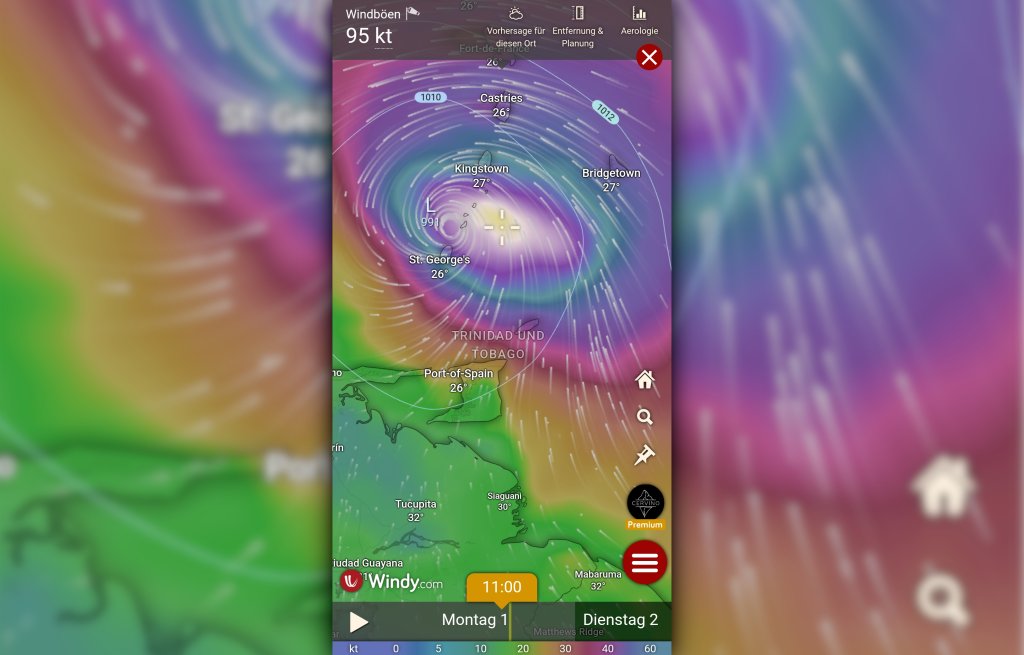
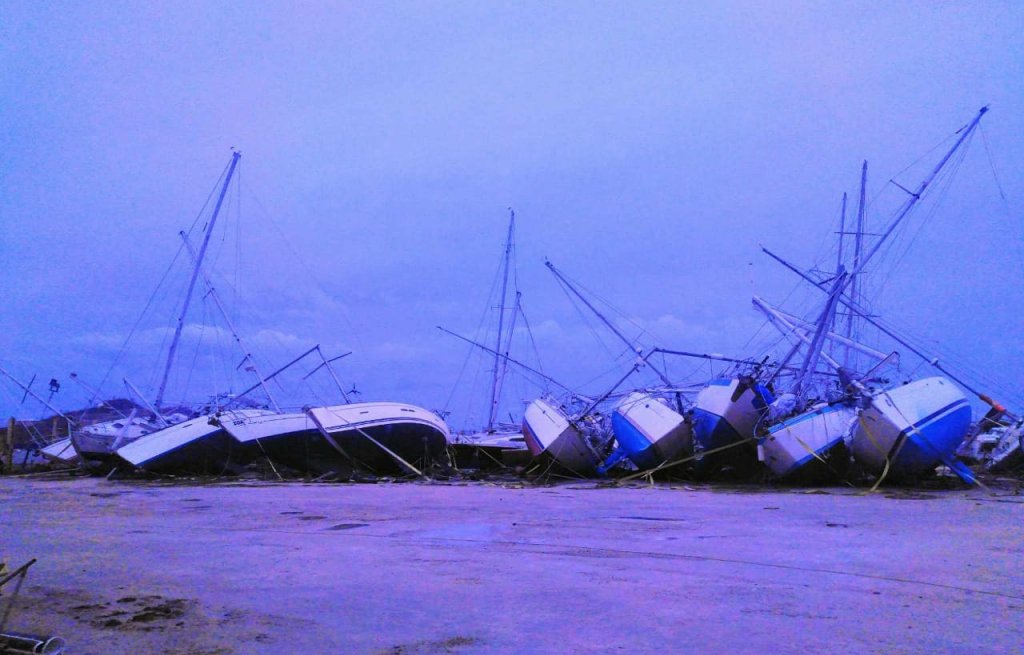
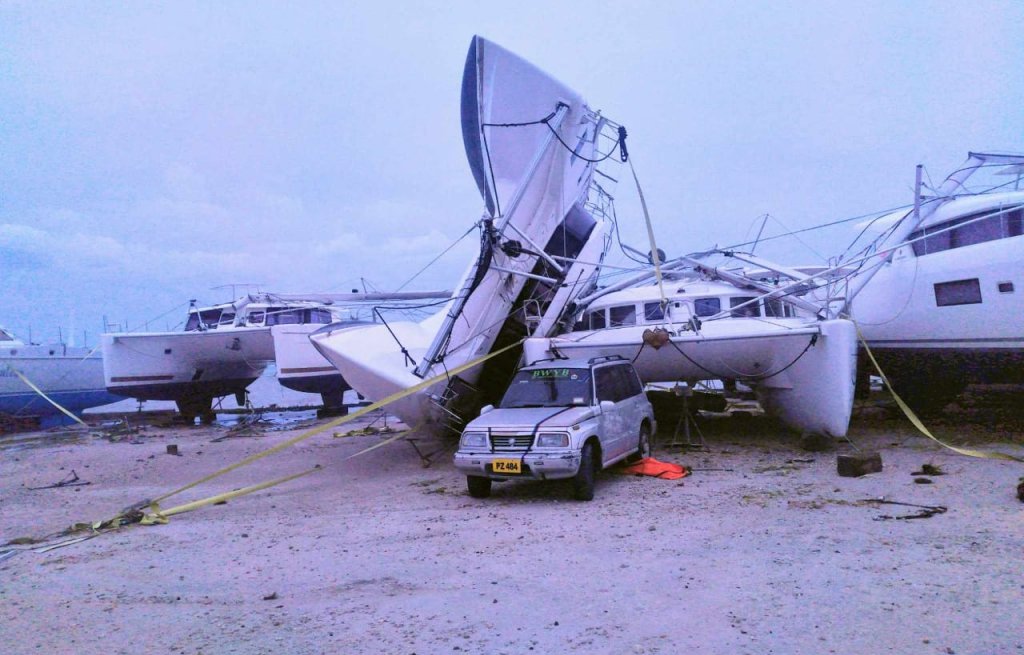
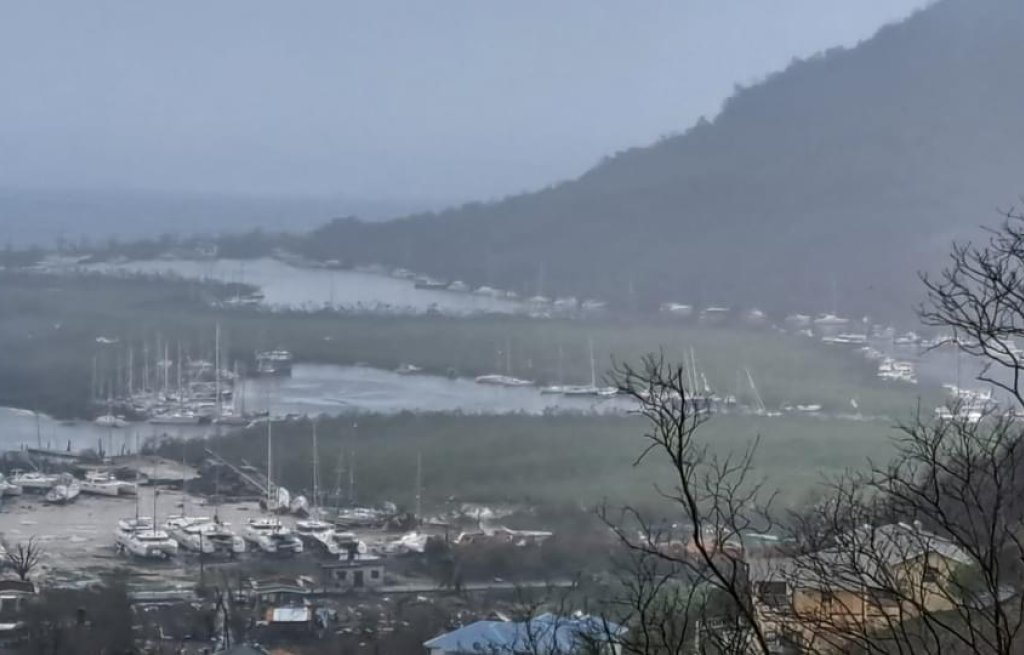
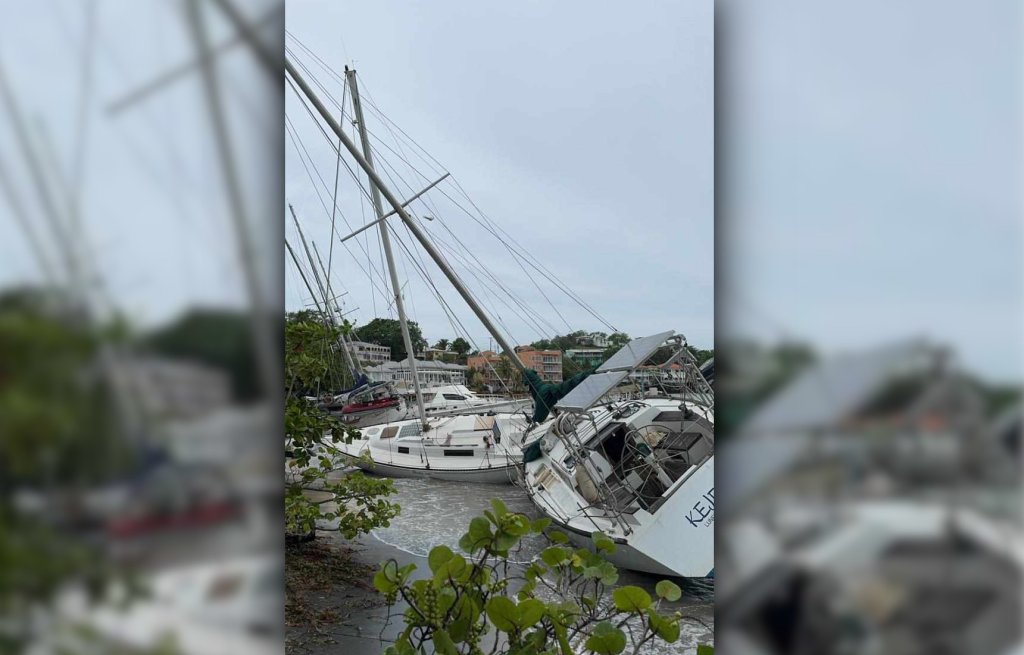
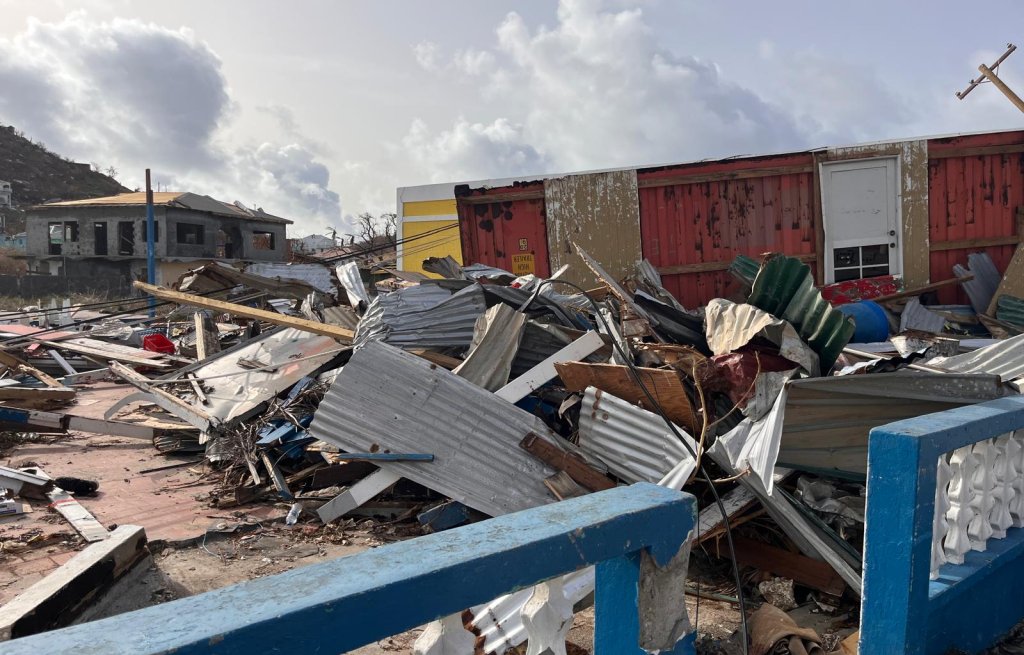
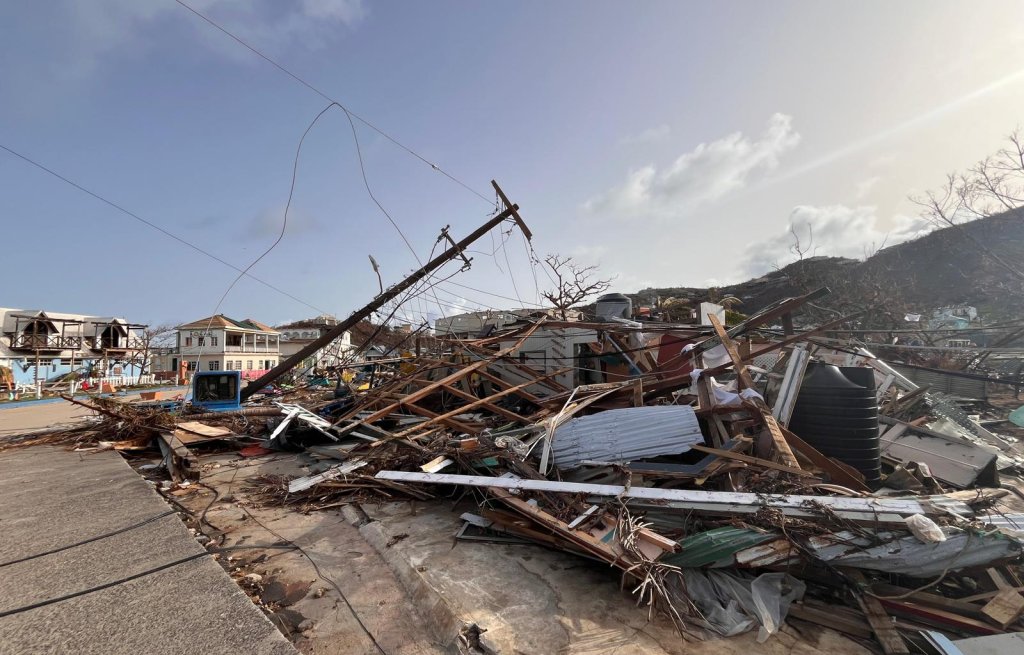
90% of the houses on Carriacou and Union Island were destroyed. From one day to the next, the people there have lost everything, absolutely EVERYTHING. We are shocked and torn. A thousand thoughts are circling in our heads. We want to help. At the same time, we have an appointment in Grenada in 4 days' time to haul out Cervino. Will that even work? Should we throw all these plans overboard, sail up to the islands and help? But we also want to fly to Switzerland in August, so the boat has to be ready and in a safe place. Leaving Cervino at the mooring in Grenada for five weeks, like it was originally planned, no longer seems like a good idea. It's difficult to put into words what's going on inside us. In any case, we're not feeling well and the roof is falling on our heads a bit. We argue all the time, often talk past each other, the mood is bad. For the first time, the boat feels like a cage.
Operation Cruisers Aid
We realise that we are not alone in this and join "Operation Cruisers Aid". Sailors like us who want to help. We start collecting donations and go shopping: Rubber boots, tarps, solar lamps, mosquito nets, hatchets and machetes. We load up several sailing boats in Chaguaramas to take them to the islands in need. We give our Starlink to our friend Johannes who takes it to Petit Martinique. The mobile phone masts have all gone, so the people there are also unable to communicate. Other sailors bring up their desalination plants to make water for the inhabitants. We have the feeling that we can help, and that is good for our psyche.
As is so often the case, we have to reorganise ourselves. We have decided to stay here in Trinidad for the time being to continue supporting Operation Cruisers Aid. Then we will put Cervino ashore here and do 3 weeks of boat work before we fly to Switzerland. The boat will be on land while we are away. It feels safer somehow. 10 boats have washed ashore in Prickly Bay in Grenada. We'll give our slot in the shipyard in Grenada to my diving school, which also had damage to its boat. I will continue my training after our return.
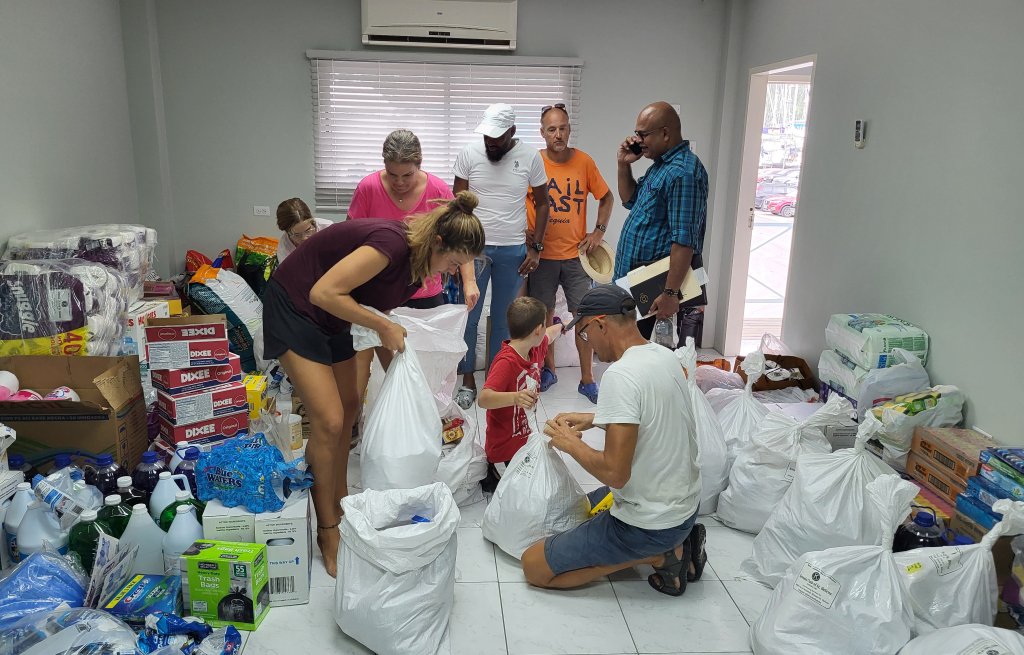
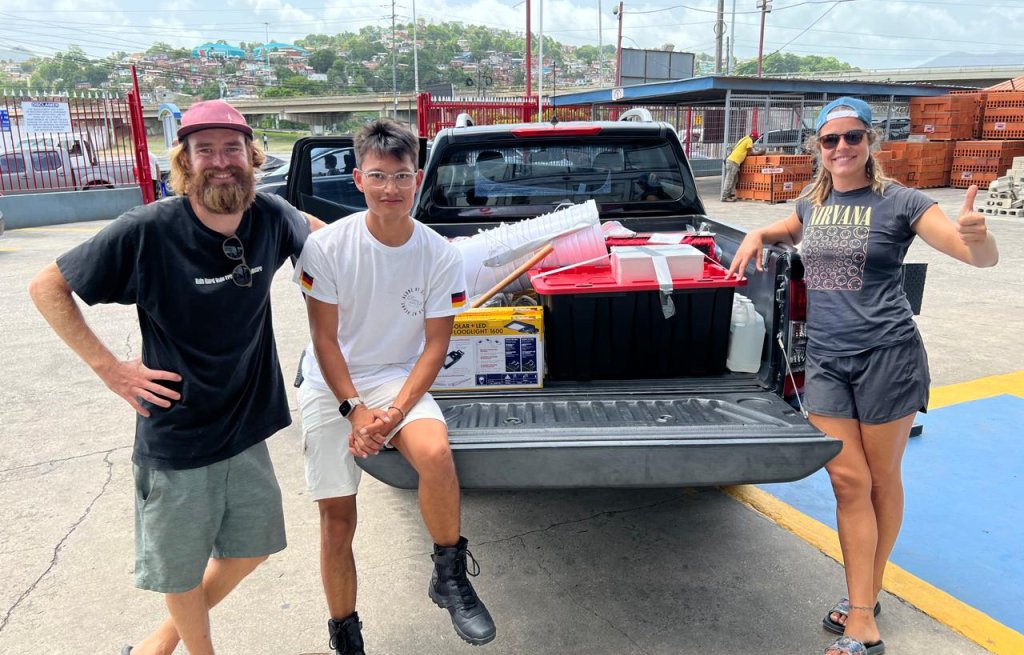
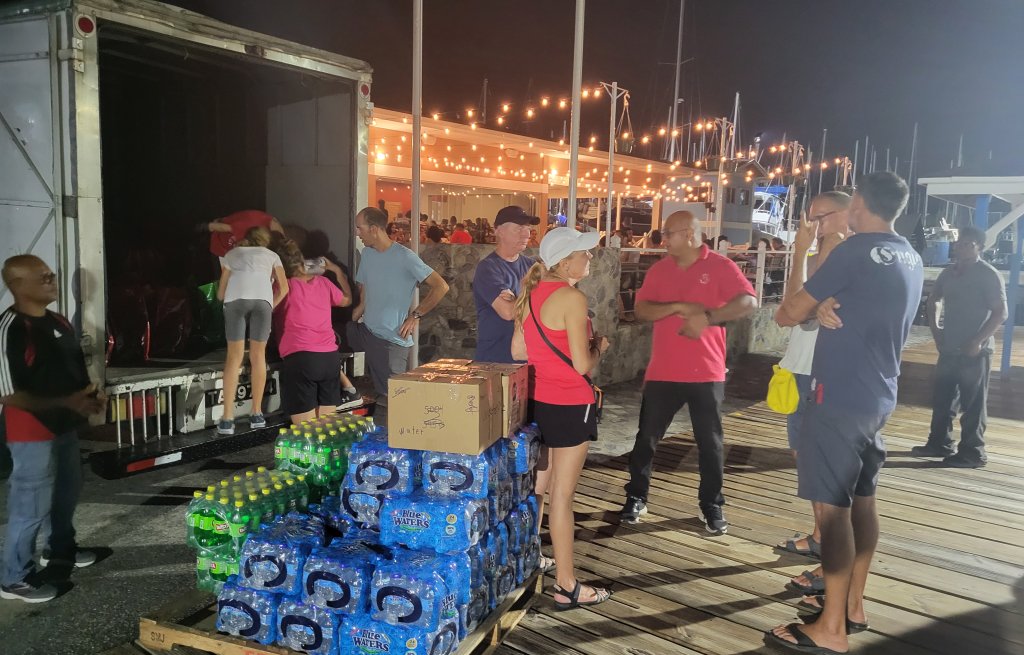
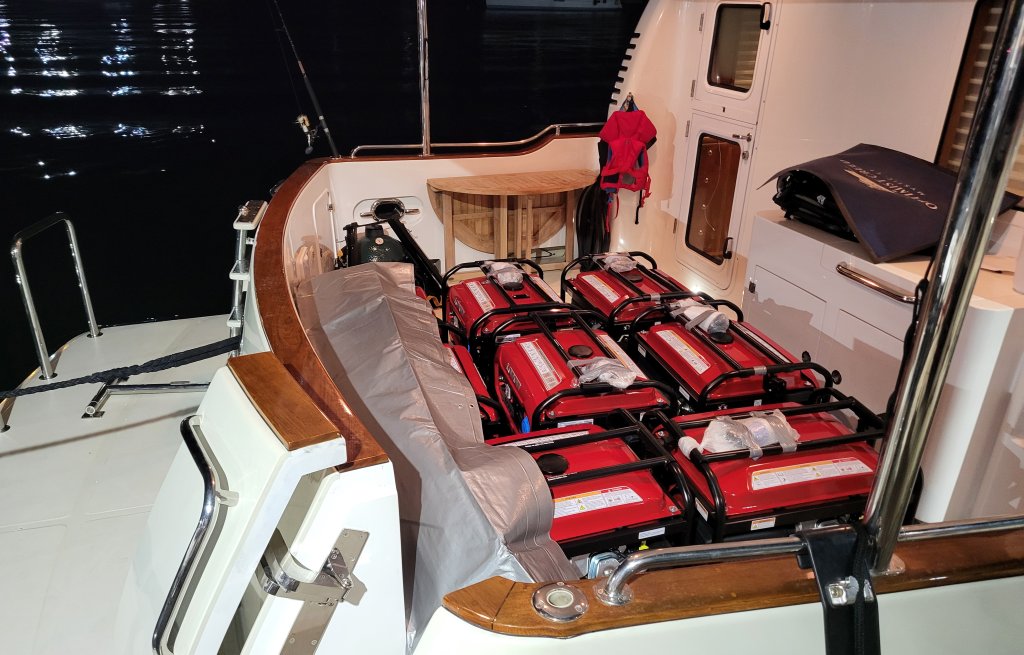
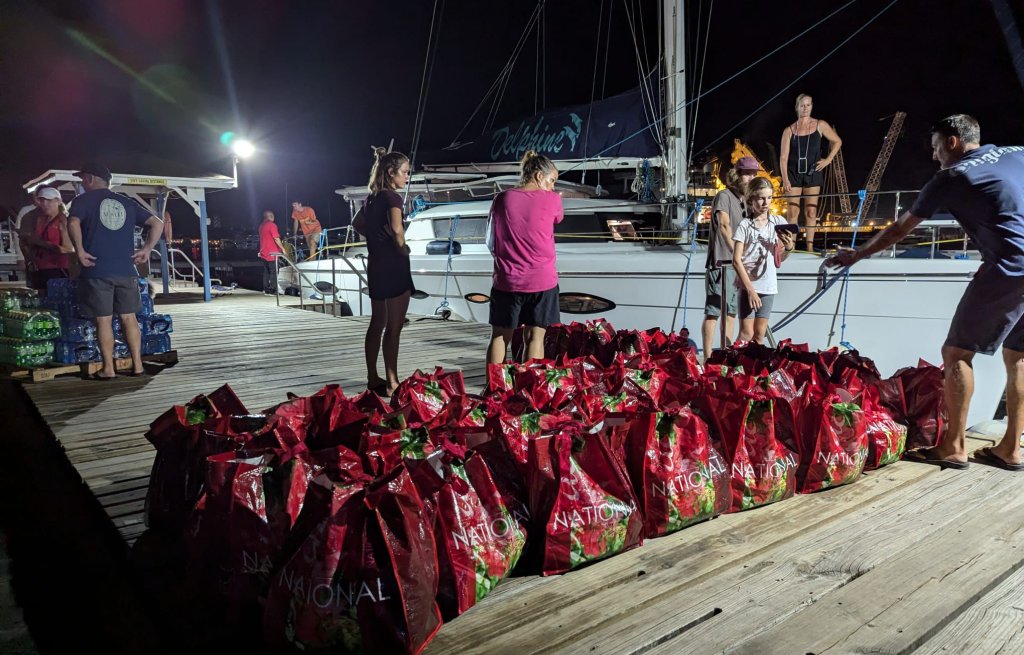
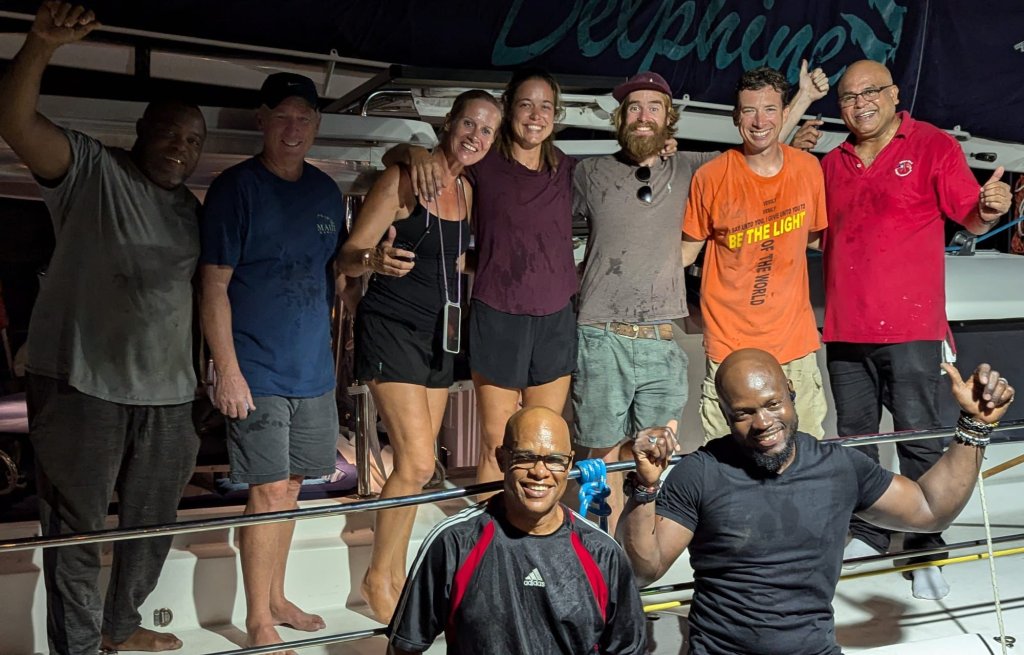
After a few weeks, the initial shock has subsided a little. We've gone completely mad with boatwork again and are ticking off our projects step by step: Replacing the rudder bearing, a few repairs in the Cooper Coat, and various small things. It's actually going quite well, except for the weather 🤣 Memo to us: painting Cooper Coat in the rainy season is not very advisable.
To see something else of Trinidad besides the shipyard, we go on a day trip: A taste of Trini. In a group of 10 people, we are chauffeured through the area in an air-conditioned bus and treated to typical Trinidadian dishes. We get to try a total of 54 different dishes. Jesse the driver tells us a lot about his homeland and we enjoy a day out.
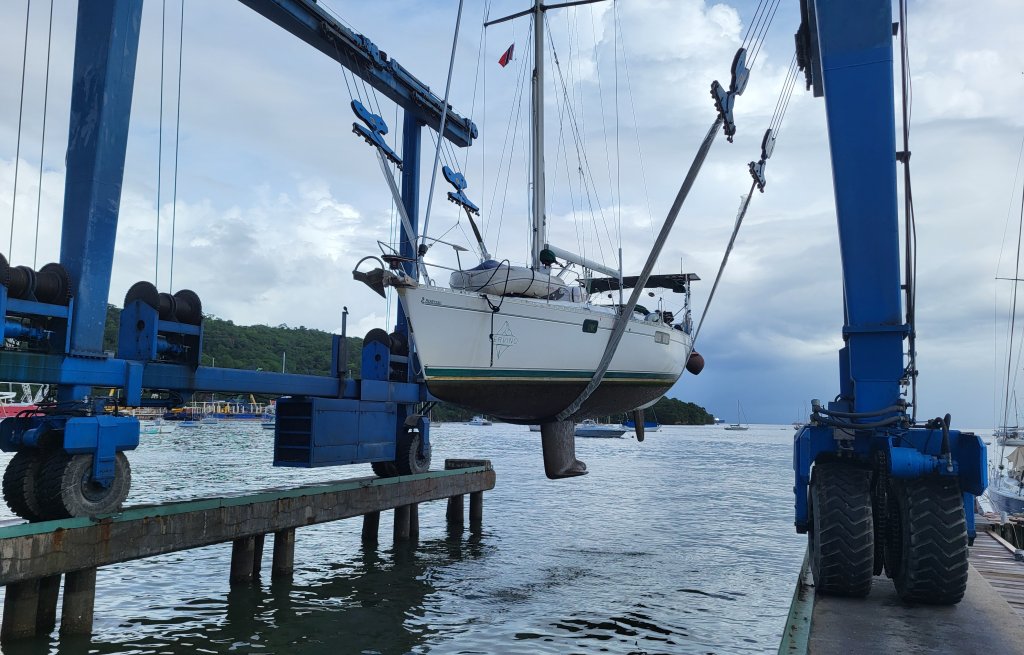
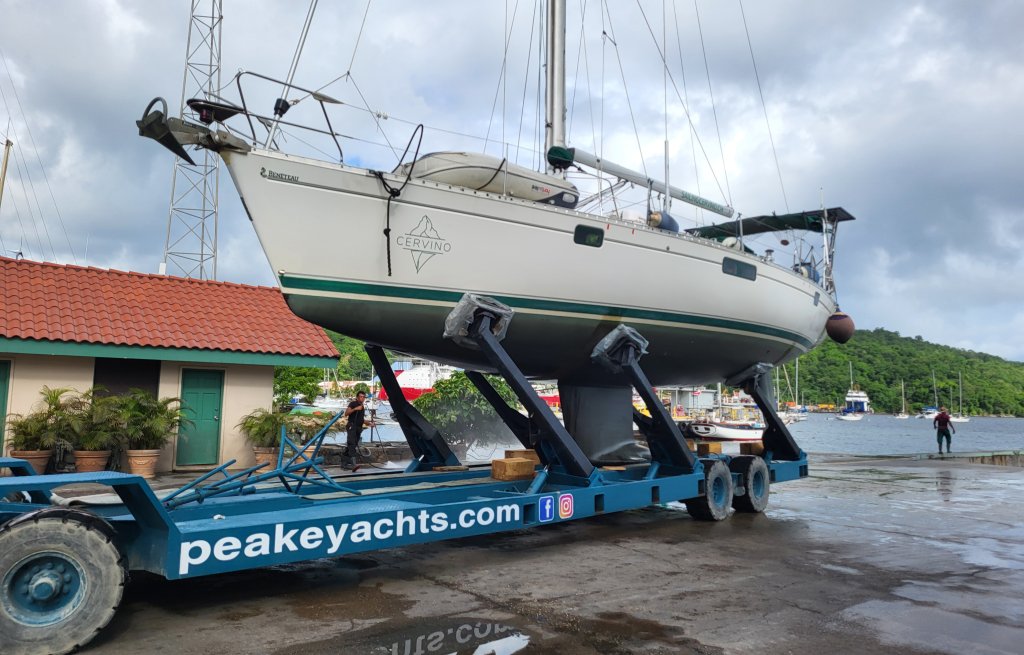
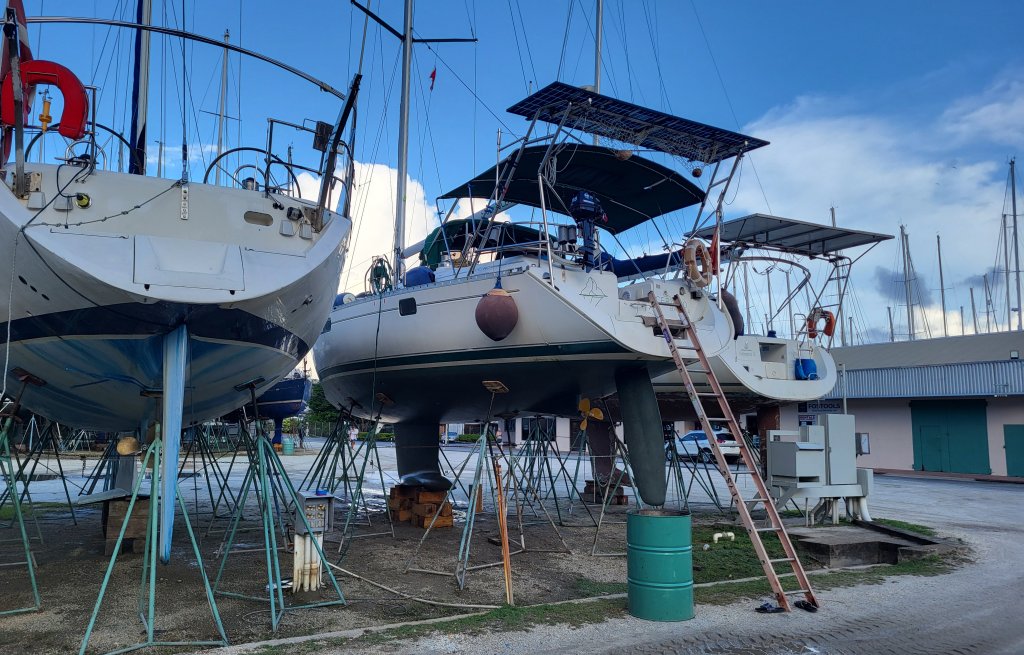
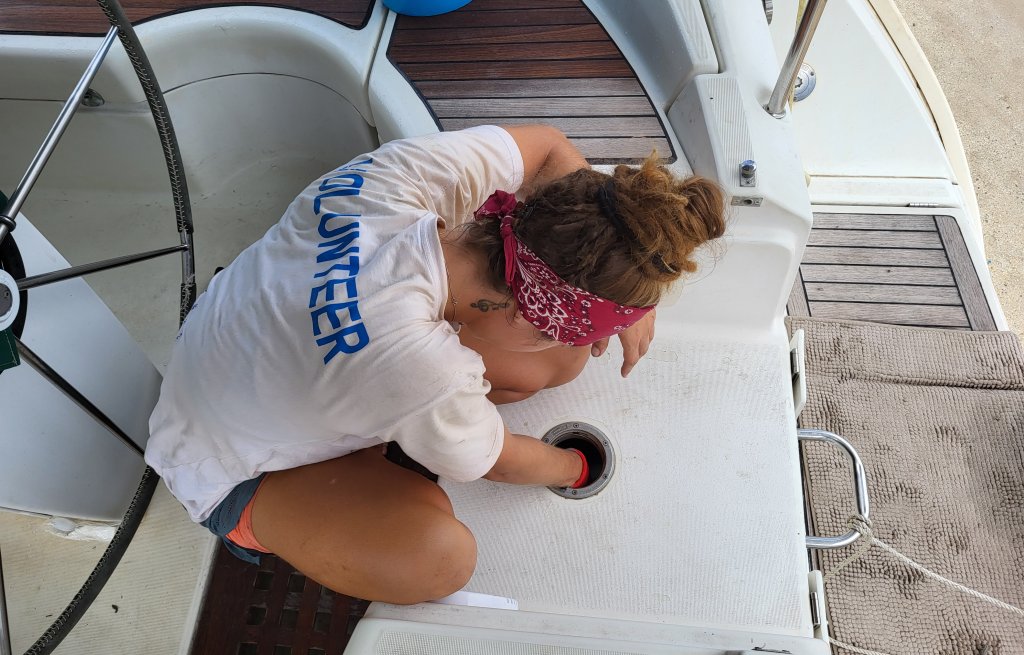
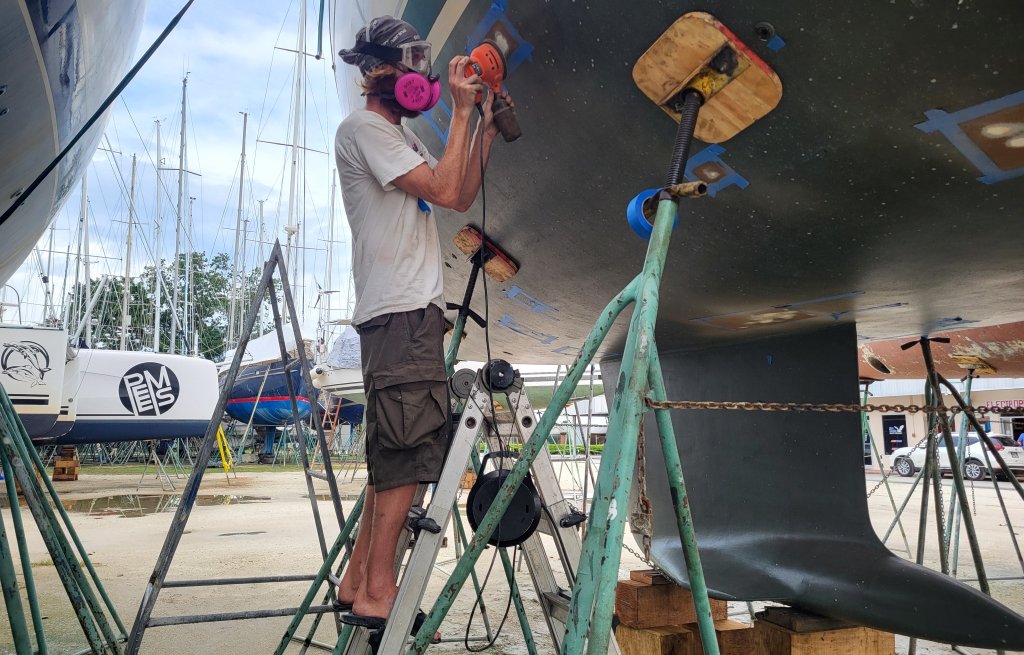
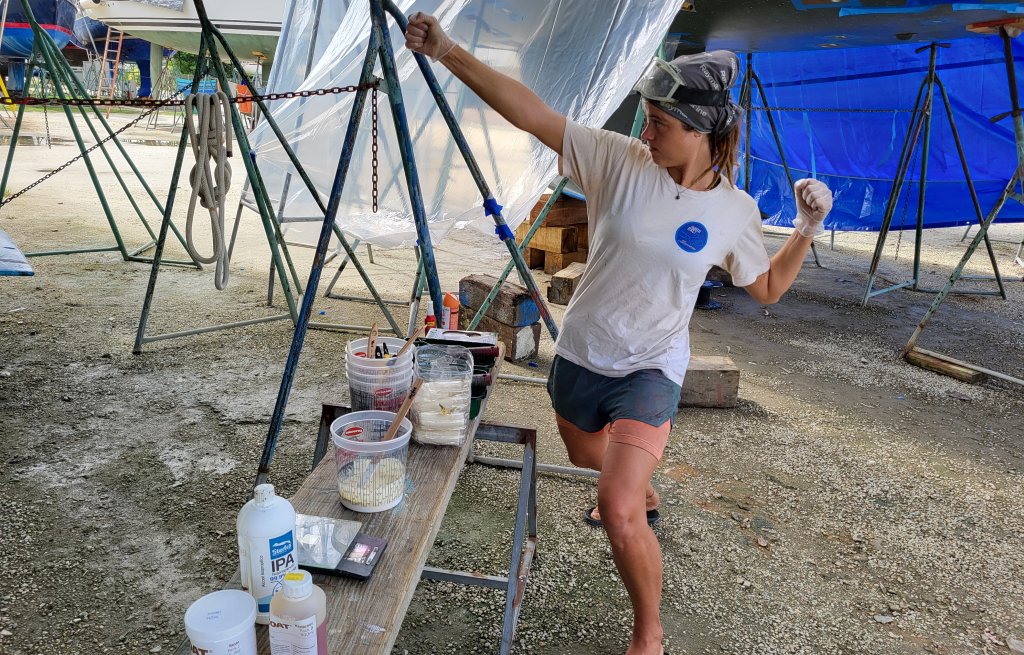
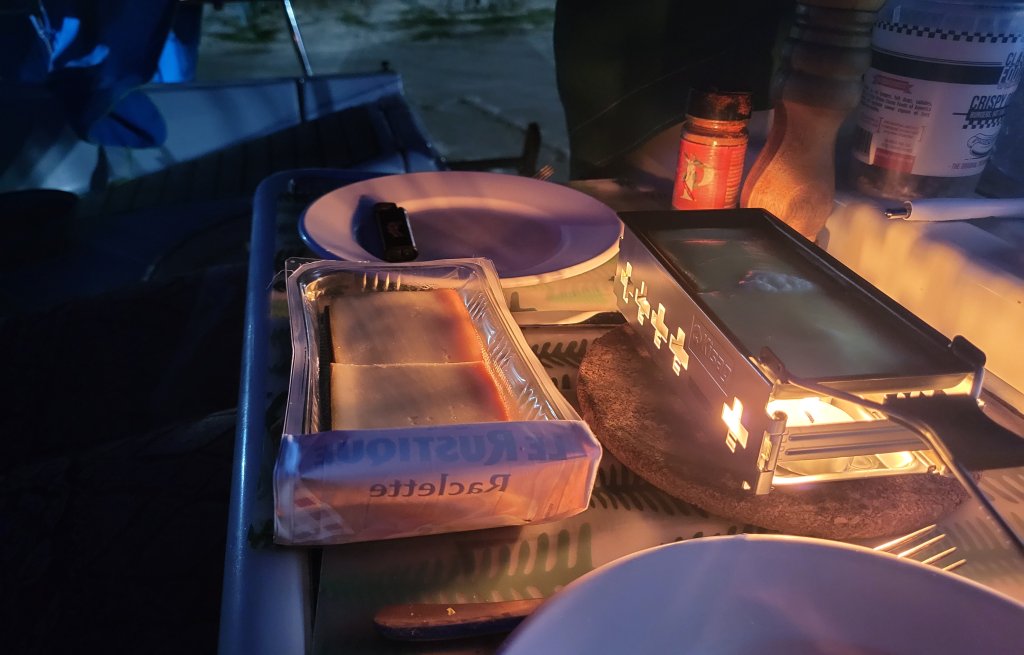
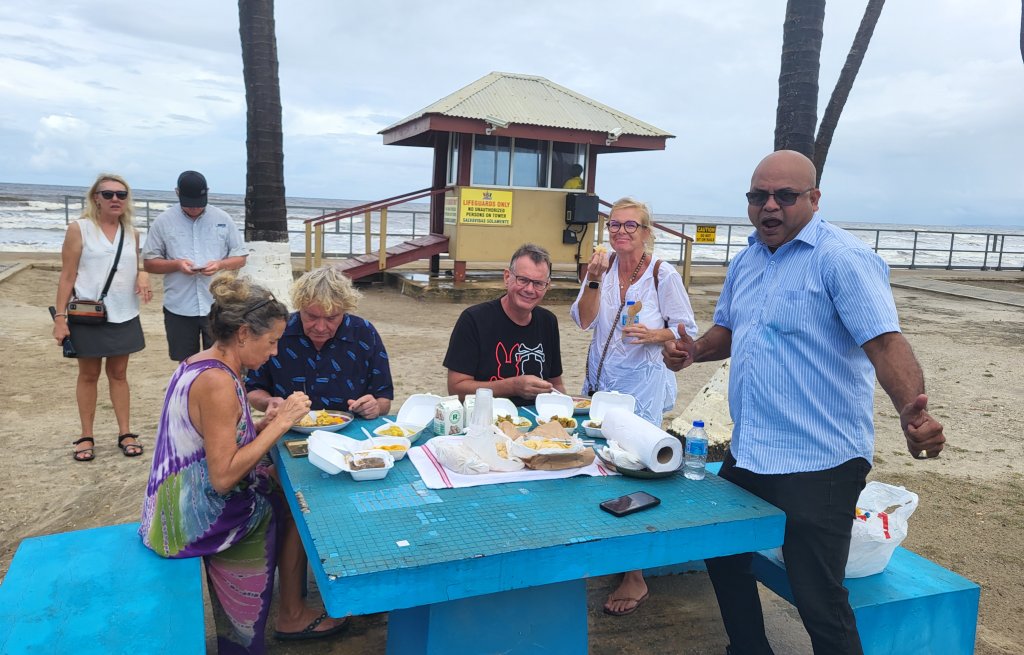
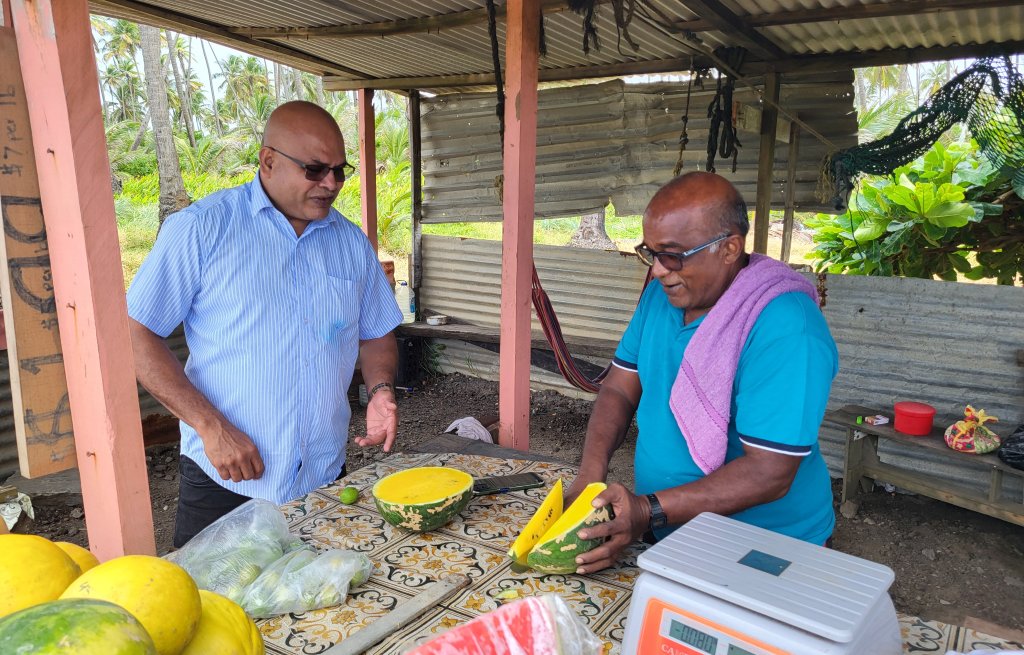
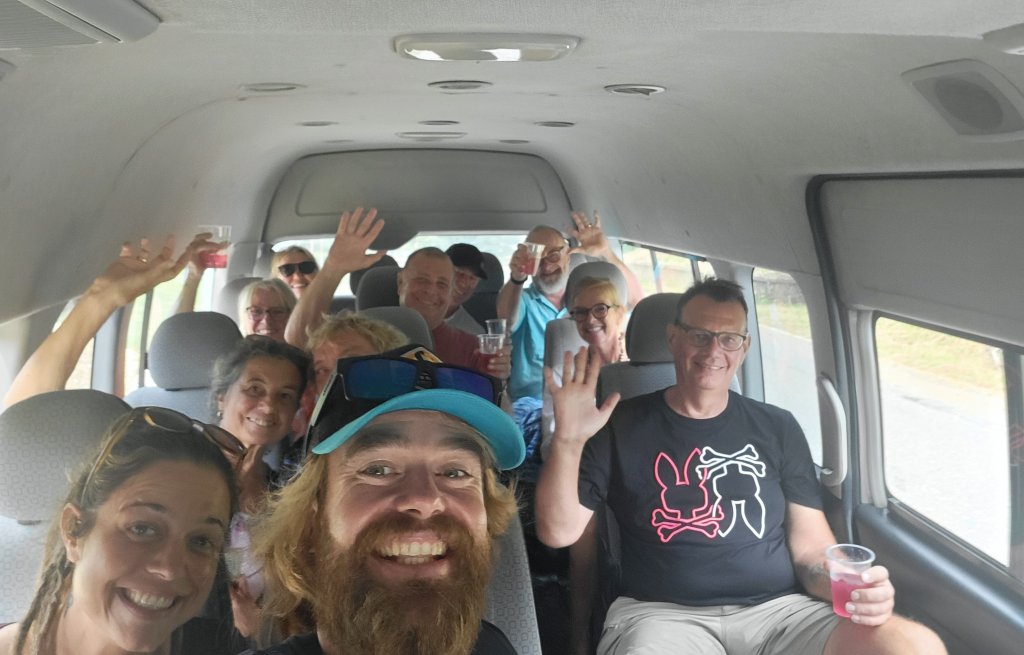
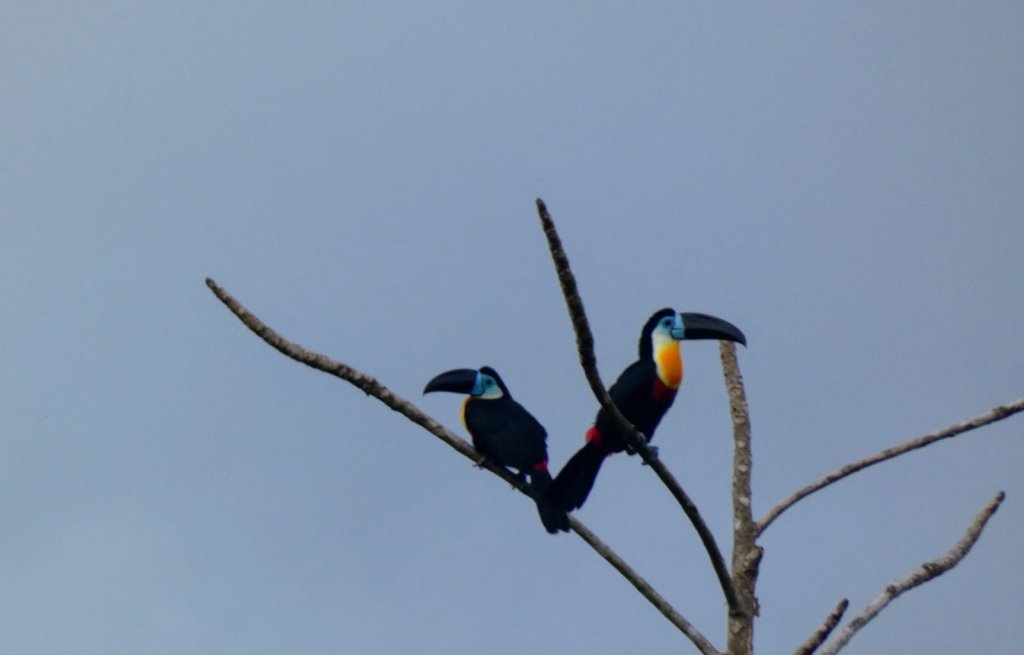
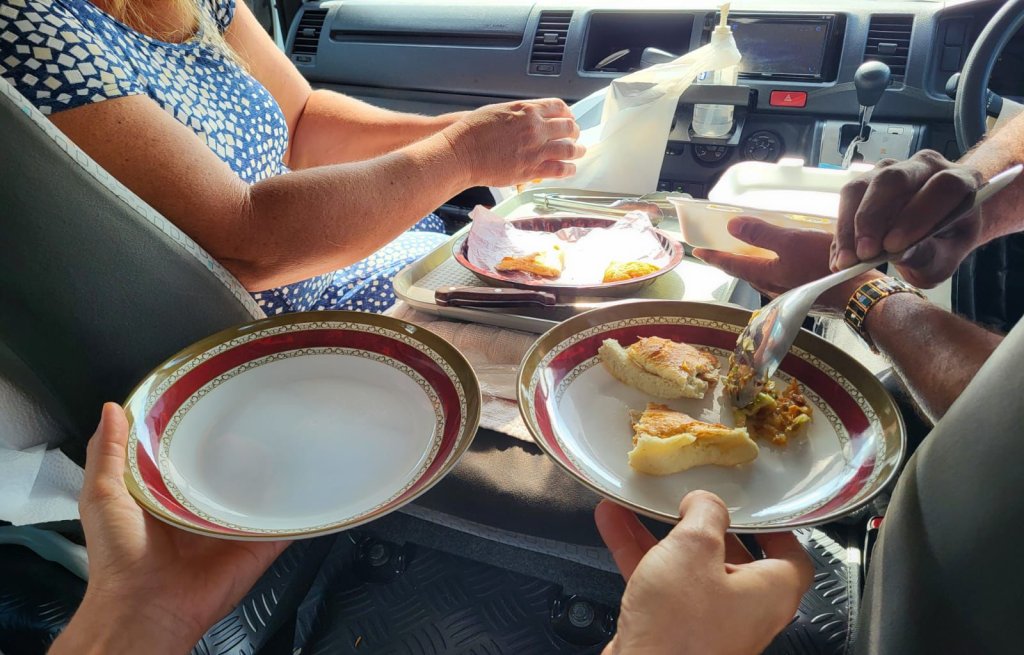
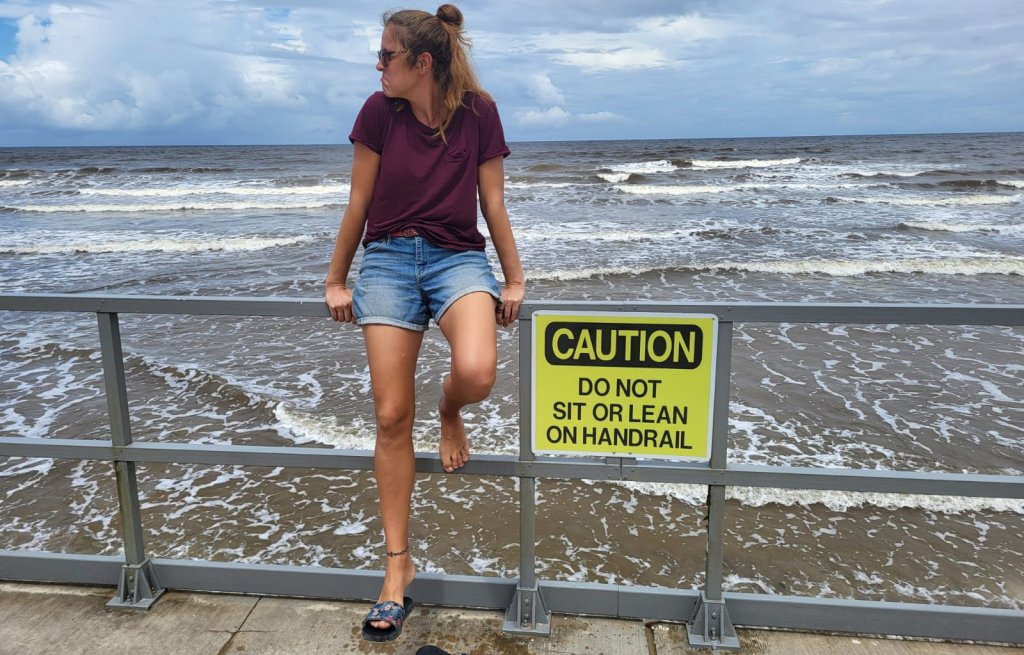
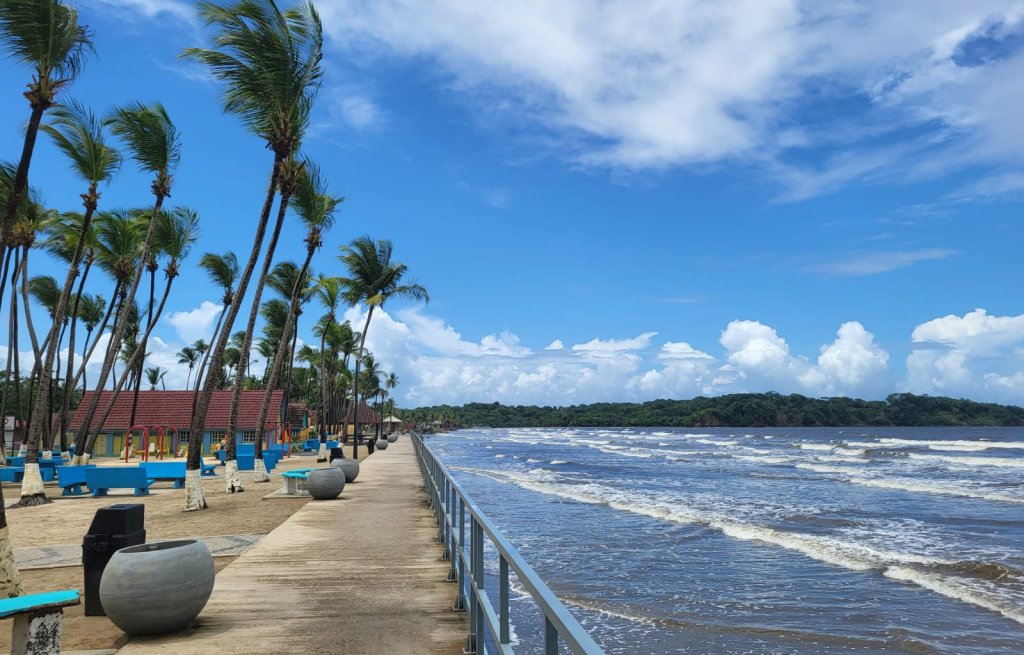
Now we are really looking forward to a change of scenery and to seeing our families and friends in Switzerland. We will first enjoy a few days in London as a couple before travelling on. It's been more than a year since we were back home. It's time, Adios beloved Cervino, we'll see you again in September!
In what condition the Cervino is waiting for us, what a snorkel test is and what the Grenadines really look like after the storm?
You will find out soon.